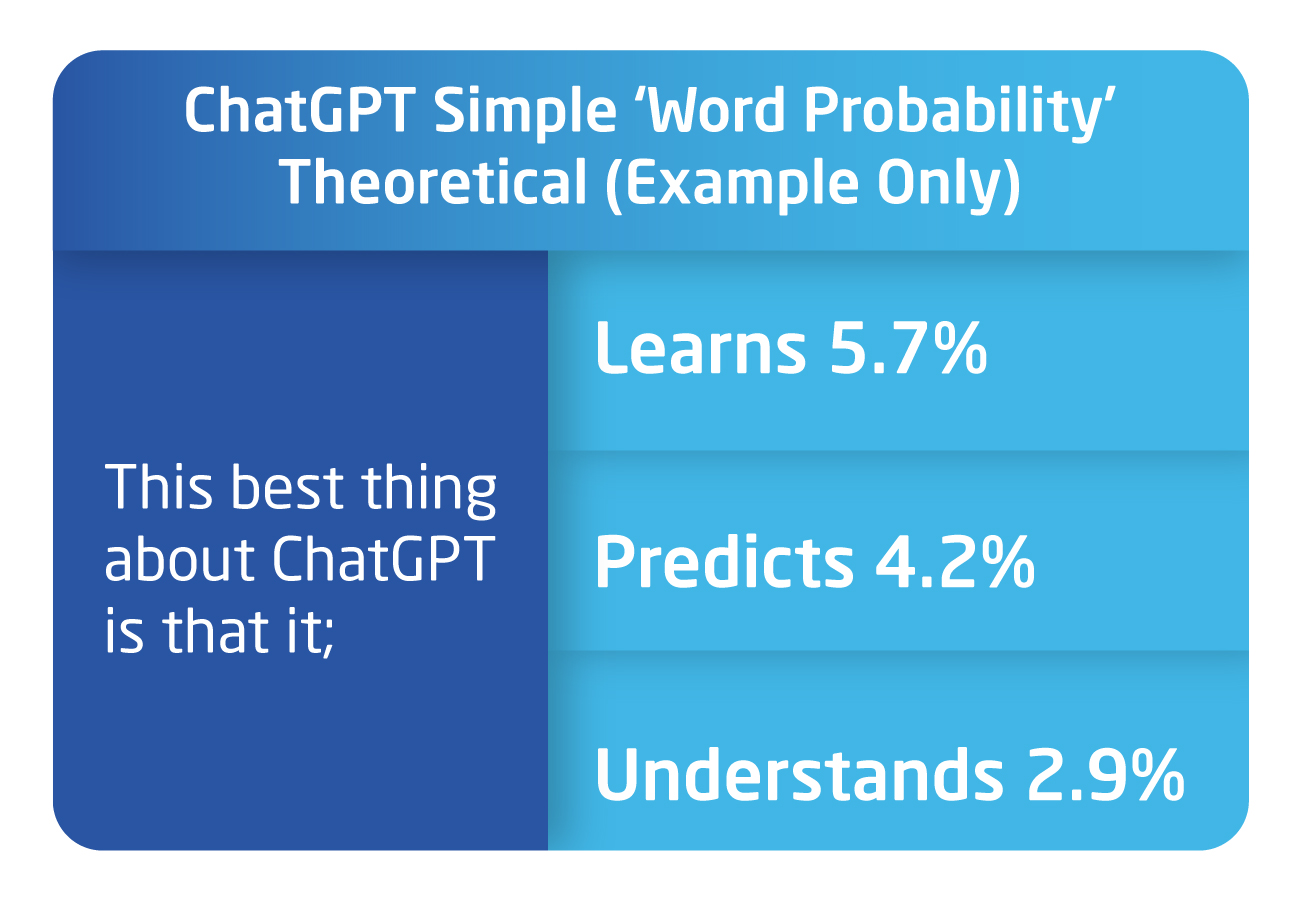Generative AI in Pricing: Its Strengths & Weaknesses
March 14th, 2024 (Updated 04/18/2024) | 12 min. read
Generative Artificial Intelligence (GenAI) may eventually become a powerful enabler of competitive advantage for companies that use pricing to leverage profit. After all, in today’s business world competition is fierce and margins are frequently razor-thin, and a 1% lift in pricing can mean as much as an 11% profit bump, and pricing has emerged at the front battleground. When utilized judiciously and aligned with the right tasks, Generative AI introduce significant business value assisting the performance of your pricing software beyond its current uses in our technology. At Pricefx, we excitedly view the revolution as a natural evolution of our investment in pricing AI.
The Pricefx GenAI Position
It is crucial to note that while Generative AI prompts provide valuable insights, they should only be used as a supplement to—and not a replacement for—an automated pricing software solution, human expertise, and judgment.
When working as a complementary conversational user experience tool, together with human analysis and as a dedicated part of a pricing software solution, Generative AI can serve as a powerful and independent tool to enhance pricing teams’ capabilities, enabling them to make informed decisions, drive revenue growth, and maximize value for their organizations.
For example, the conversational user experience supported by GenAI introduced by Pricefx is an example of an extended user experience to democratize access to data and insights and improve the speed of decision-making by facilitating the creation and actionability of curated insights and recommendations. Deploying a tailored and open source LLM technology, our GenAI Actionable Insights will enable a natural language-based processing and generation to create and serve prescriptive and predictive insights that users can leverage to quickly identify opportunities and risks that have the biggest volume, revenue, and margin impact for the company. GenAI LLM capabilities are also now part of our product Knowledge Base, enabling natural language chat-based search and discovery for the entire online training and education website for Pricefx products and services, and in our Product Similarity Accelerator to identify substitute products to upsell and cross sell.
An exciting future awaits for GenAI in pricing – watch out for our upcoming article, “Dreaming Big: Imagining a Future for GenAI in Pricing” coming soon.
However, the extensive capabilities of GenAI sometimes run the risk of being misunderstood, leading to unmet expectations and even unintended consequences. The key lies in recognizing the sweet spot where GenAI can truly enhance your pricing software and avoiding mismatches and misunderstandings in the technology’s capabilities.
At Pricefx, we have more than 12 years’ experience supplying innovative solutions at the forefront of the pricing industry. As the world’s leading enterprise-grade native-cloud pricing software vendor, we take great pride in our development of emerging technologies to help solve top-line business problems and boost profits and growth for our clients.
Determining whether GenAI is an ideal complement for your pricing software is not always straightforward. It’s remarkable potential can sometimes obscure our judgment, making it essential to approach this integration thoughtfully. So, join us in this article where we examine what Generative AI is and does and analyze its strengths and weaknesses as another potential utensil in your extensive pricing technology toolkit.
What Generative AI Does & Why It Is Different to Predictive & Prescriptive AI
Let’s demystify GenAI and explore its true nature, cutting out the mythology to define what it truly does. Picture a versatile tool that effortlessly blends human-like text generation with the prowess of artificial intelligence.
At its heart, GenAI is a robust Large Language Model (LLM) meticulously trained on vast repositories of text harvested from the vast expanse of the internet. It is highly likely that you have encountered a slew of GenAI tools like ChatGPT, Chatspot AI, Jasper AI, Perplexity AI and others, each possessing the exceptional ability to comprehend the intricacies of existing content and craft entirely new and original material. Imagine GenAI as your trusted wordsmithing companion, capable of effortlessly helping you craft a diverse range of content, from engaging articles to articulate chatbot responses, all delivered with exceptional fluency and creativity. You can even train your GenAI to write like you by adding examples of your writing and the required styles that you need.
But what Generative AI is not, is a numbers machine. It simply defines what is the statistical probability of the next word to appear in a sentence. For example, the popular GenAI tool, ChatGPT does something like the below table, except that it does not look at literal text; it looks for things that in a certain sense “match in meaning.” However, the end result is that it produces a ranked list of words that might follow, together with the “probabilities.” as we see below:

GenAI LLM models can detect the patterns of language well enough to respond with startling lucidity, but they do not truly understand the subject matter. Given a word or letter, the models reference their training data and determine the word or set of words most likely to come next in order.
In essence, GenAI is like a ‘language calculator.’
It’s not at all involved with crunching numbers; it is about crafting the perfect words.
GenAI is NOT a replacement for pricing software, but simply another component in pricing software’s AI suite of tools. GenAI (and all other AIs) are inter-dependent and should be “composed” (meaning that the resulting AI solution is made of multiple inter-dependent specialized algorithms originating from multiple AI domains, like Lego bricks of different shapes and colors being assembled on a board).
To be successful at GenAI, companies should establish roadmaps today and prepare their platforms, data, and predictive and prescriptive AIs as they are the foundation of GenAI.
Check out the article below if you would like to learn more about the prescriptive and predictive AI models used in Pricing Software AI:
So, now that we have cleared up the confusion and separated the myths from reality of GenAI, evidently, GenAI is not the magic bullet for pricing that many hoped it could be. That said, it still has its potential uses.
With that in mind, let’s continue and go ahead to analyze the strengths and weaknesses of GenAI through the prism of pricing.
The Strengths and Weaknesses of GenAI
Now that we have covered what GenAI is designed to do, let’s analyze its benefits and drawbacks.
First off and importantly, GenAI is not so new, and not the only AI in town. We have had AI wizards like Siri, chatbots, and even Google Search doing their generative and cognitive AI stints for years. And there is a diverse cast of other AI characters:
- Autonomous AI (think Tesla’s self-driving tech).
- Predictive and prescriptive AI that are essential for the Pricefx pricing software models. In particular, Pricefx’s multi-agent optimizer which uses Agent-based AI to understand and optimize across all pricing waterfall elements.
- And machine learning (ML), the oldest flavor (our pricing software competitors only use ML by the way).
The Strengths of GenAI

GenAI Specializes in Unstructured Data
When it comes to unstructured data, especially natural language text, GenAI shines as the star of the show. It flaunts multilingual prowess, conversing fluently in various languages, summarizing text, rectifying grammar, and weaving intricate translations. GenAI tames the nuances of language intricacies like tone, style, and context, transforming it into an extraordinary linguistic virtuoso.
For example, check out my recent article for the potential ways it can even possibly augment the way your salespeople work with your CPQ (Configure Price Quote) software:
Creativity Superpowers
One of GenAI’s most remarkable powers is its innate creativity. Beyond its chatbot duties, it possesses the talent to craft images, compose melodies, and even provide delightfully written text answers to perplexing law exam questions. It is as if you have an artistic prodigy readily at your disposal, potentially conjuring artistic masterpieces given quality, correct and creative prompts. But…………. there are buts.
The Weaknesses of GenAI
It is also crucial to recognize GenAI’s limitations that include the following:
Lacking Comprehension and Numeracy Skills
While it might seem intelligent, GenAI lacks genuine comprehension. GenAI operates by predicting one word at a time, like predictive text on a smartphone. This means it does not grasp the entirety of a sentence, functioning more as a word conjurer than a cognitive thinker, let alone being a number cruncher.
GenAI tools are simply not number crunchers at all. Anyone that has asked a GenAI tool to complete a task as simple as to count the number of words in a paragraph (and experienced the rather odd results) will know that is currently not the type of tool to track how many products your global enterprise business currently has on your product lists.
Pricing Software are data and numbers’ applications. Using GenAI for numbers problems is like using a dictionary to solve a math problem when you should be using a calculator.
As we move through the ‘hype cycle’ people will realize with GenAI , it is a ‘language calculator.’
Useful, and great at what it does, but not intelligent.
Logic Deficits
Another limitation lies in GenAI’s absence of logic. It operates like a young child repeating “1+1=2” without truly understanding the concept of mathematics. It does not craft responses through reasoning but rather predicts the most likely next word based on context. This is perhaps the most critical distinction between current AIs and the way intelligent creatures think and plan before they act.
Subject to Prompt Quality
GenAI answers are often dependent on/sensitive to the prompt used, and two equivalent prompts worded differently can lead to extremely different answers, and potentially only one of which may be valid. As a side effect, when asking for explanations on an answer, the chatbot can also often contradict its original answer.
What’s more, slight variations in phrasing or in context may yield different responses, akin to ordering a coffee with minor changes (cream, no sugar, sweetener, almond milk, half-and-half etc.) resulting in a distinct and personalized brew. The same can be said about changes in training data: There are few guarantees that a new version of the model would produce the same results with the same prompts unless the model is subject to intense and complex learning and post-processing processes.
In general, chatbots are extremely sensitive to prompt quality, much like the “garbage in garbage out” phenomenon often experienced in other AI applications.
An inability to explain reasoning, sources and data used to generate results is a common issue with GenAI models.
This inability to know how data is flowing in these models’ conflicts with many other aspects of pricing and AI including privacy and confidentiality, data protection and copyright, not to mention broader regulatory and societal concerns.
Knowledge ‘Hallucinations’
GenAI’s performance is not devoid of quirks. It can occasionally conjure information that does not exist, creating what are known as “hallucinations.” Furthermore, GenAI does not admit when it does not know something, confidently delivering incorrect responses. This can be likened to someone who steadfastly believes they are right, even when they are not.
GenAI can ‘fabricate’ information to support arguments and create events that never took place. This New York Times article shows the extent to which GenAI can still currently ‘hallucinate.’
Consequently, GenAI users must double check anything that comes out of GenAI. And, over time, they must also grasp and make a concerted effort to assess for which tasks AI-powered chatbots are well-suited.
Explanation Deficits
GenAI struggles to explain its thought process, unlike humans who can clarify their reasoning. It operates like a magician who performs tricks without revealing the secrets behind them, leaving its operations shrouded in mystery which can be a problem for pricing practitioners who naturally are very keen on keeping abreast of pricing insights and understanding the how’s and whys of what the data reveals to them.
This inability to know how data and knowledge are flowing in these models has far-reaching consequences. First, it creates fundamental conflicts with many other aspects of pricing and AI including privacy and confidentiality, data protection and copyright, not to mention broader regulatory and societal concerns. But it also makes it extremely hard to know if the LLM is transforming knowledge, or merely repeating something that existed in the training data? On that note, recent research from Google suggests the latter: LLMs struggle to “generalize” knowledge.
In other words, LLMs know because similar knowledge exists in their enormous training data set – A common phenomenon in data science called “data contamination.”
Enormous Data Dependency
Lastly, in addition to these cognitive quirks, the immense size, and data dependency of GenAI requires substantial resources for training and deployment.

GenAI is enormous – it is like having a circus tent full of data. Training this AI is not cheap; it costs millions and takes weeks. For example, training GPT-4 cost more than USD$100 million and took weeks.
Of course, some applications may be getting away with infrequent training and smaller models to save costs.
But the “Large” in LLMs also implies large inference costs. For LLMs, inference is the process of computing the results, which in this case consists in performing the prediction of the response by evaluating the combination of the knowledge of the trained model with the user’s new information. As trillions of calculations must be performed whenever a user needs an answer, the bill grows quickly.
That is Great – But is GenAI Really the Next Big Thing Coming Up in Pricing?
Now you know the strengths and weaknesses of GenAI and how it already is a part of the Pricefx platform, you will want to get more detailed information on the overall uses of all types of AI technology in pricing software.
To explore a great overview for 5 really cool things that AI can do for your pricing, check out the handy article below:
Or if you would like to dive deeper into what GenAI is and what really makes it tick, please check out my eBook by clicking on the image below:
Meanwhile, Happy Pricing!



